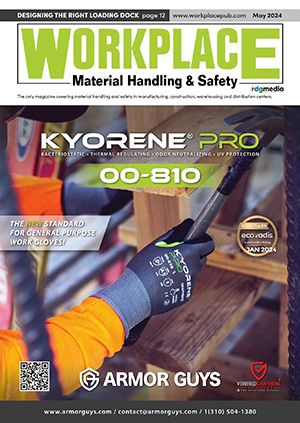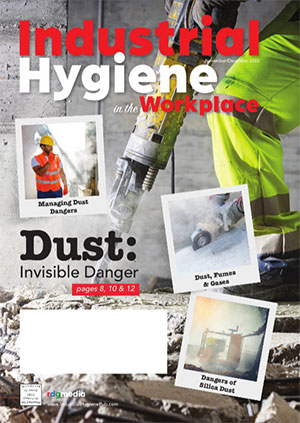The Best Practices for Head Protection PPE that Are Commonly Overlooked
By Joe Brandel, Contributor
For workers, construction is one of the most dangerous professions out there. The industry is ranked fourth on the Occupational Safety and Health Administration (OSHA) list of most dangerous jobs.[1]
According to OSHA, the four leading hazards, or “Fatal Four,” that construction workers face on job sites include falls, being struck by an object, electrocution, and being caught in between two or more objects.[2] Depending on how these highlighted hazards occur, the dangers that workers are exposed to run the risk of causing traumatic brain injuries (TBIs), which can have life-altering and even fatal repercussions.
In the United States alone, the construction industry has the highest number of fatal and non-fatal workplace-related TBIs out of any other industry. In the construction industry from 2003 to 2010, a total of 2,210 employee fatalities were due to TBIs. These represented 24% of all workplace-related TBI fatalities in all industries.[3]
In light of the threats that exist for workers in the construction industry, there are several steps that employees can take to help safeguard themselves from risk of injury and even death while on the job. One crucial step is using proper head protection PPE, such as helmets and hardhats.
Many Workers Aren’t Properly Protected
Despite this, according to a recent survey from PPE provider J.J. Keller Safegear, a huge portion of construction workers are not wearing proper head protection on the job. In a field so well-known for the omnipresent dangers that exist for workers, why are workers not taking adequate measures to reduce their risk for TBIs? According to the survey, the vast majority of workers who refrain from wearing head protection simply do not want to wear it (72% of respondents) while half do not think that it is mandatory (50%).[4]
The construction industry has an education problem, as underscored by this survey’s results. The very real threat of TBIs while working on the job is not being clearly articulated by industry leaders, construction company owners, and project managers – and neither are the straightforward measures that workers can take to minimize on-the-job risks.
Increasing PPE Usage
One approach to increasing helmet usage is to better educate those in the industry on the risks of rotational motion and TBIs.
The majority of traditional helmets are developed and tested to withstand only the force of linear impacts, which address focal injuries such as fractures and contusions. However, many accidents on real-life construction jobsites do not occur linearly, but at an angle. For instance, when a person falls and their head strikes the ground, the impact typically occurs at an angle. These accidents can expose the brain and head to rotational motion. For the brain, exposure to rotational motion can cause movement of brain cells relative to each other, which leads to shearing, and can result in damage to the brain’s axons, the cable transmitters of neurons.
As a result, without design or technology that addresses rotational motion, helmet wearers are in greater potential danger of diffuse injuries like diffuse axonal injury and subdural hematoma. Depending on the severity of the impact sustained, TBIs can lead to time away from work, life-long afflictions, and even fatalities.
A greater industry focus on the risks that head trauma and rotational motion present, as well as the steps workers can take to address them, are crucial to increasing helmet usage.
Another important step the industry can take to increase worker helmet usage is selecting helmets that fit comfortably. A comfortable helmet that fits firmly against the head has been proven to make workers more prone to wearing their helmets.
Choosing the Right PPE
Over the decades, neuroscience has rapidly advanced to better understand the causes and consequences of brain injuries. However, in the past century, very little has changed in present-day helmet and hard hat design.
When selecting helmets, construction workers should take into consideration whether their helmets are designed to address rotational motion. Mips’ safety system, for instance, is designed to help reduce the rotational motion of certain impacts that may otherwise be transferred to your head, bringing helmets into the 21st century.
From a regulatory standpoint, construction industry standards for helmets lag drastically. While there have been promising developments for some standards in both the sports and moto industries to address the impact and consequences of rotational motion, today’s construction helmet standards do not take into account rotational motion. As the industry pushes for crucial regulatory standards that put worker safety at the forefront, we at Mips are committed to continue innovating solutions in line with our mission of leading the world to safer helmets.
Joe Brandel is the Business Development Manager for the North America Industrial Safety Market, Mips (mipsprotection.com).
[1] https://www.invictuslawpc.com/most-dangerous-jobs-osha/
[2] https://ehsdailyadvisor.blr.com/2019/05/oshas-fatal-four-leading-causes-of-fatalities-in-the-workplace/
[3] https://blogs.cdc.gov/niosh-science-blog/2022/11/10/construction-helmets/#:~:text=Work%2Drelated%20Traumatic%20Brain%20Injury%20in%20Construction,100%2C000%20full%20time%20equivalent%20workers).
[4] https://www.jjkellersafety.com/news-articles/survey-finds-reasons-employees-dont-wear-ppe




